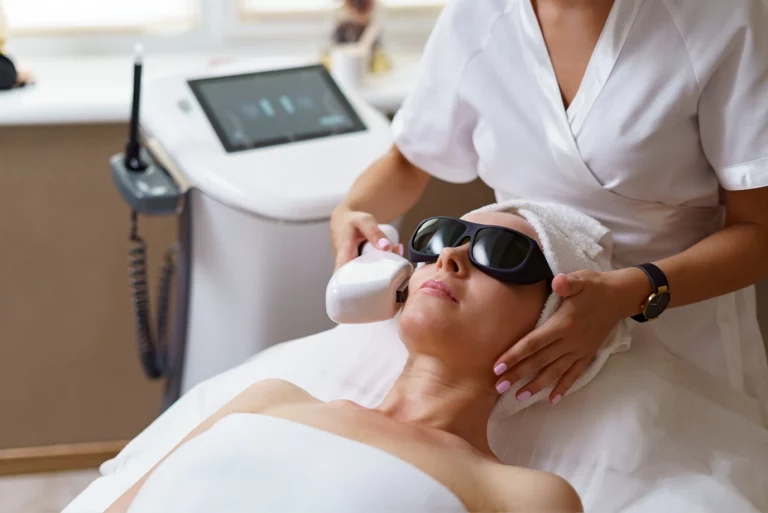IPL, or Intense Pulsed Light, skin rejuvenation is a popular non-invasive cosmetic procedure designed to improve the appearance and texture of the skin. It’s commonly used to treat a variety of skin concerns, including sun damage, age spots, rosacea, broken capillaries, and overall skin aging. IPL uses high-intensity pulses of light to penetrate the skin’s surface, and unlike laser treatments which use a single wavelength of light, IPL uses a broad spectrum of light wavelengths. This allows IPL to target different skin issues simultaneously.
The light energy is absorbed by specific targets in the skin, such as melanin (responsible for pigment), blood vessels, or collagen. The body’s natural processes then remove the treated tissue, leaving the skin looking healthier and more youthful. Patients can typically resume their regular activities immediately after the treatment, making it a convenient option for individuals with busy lifestyles.
Price Varies On Location

IPL works on the principle of selective photothermolysis. The broad spectrum of light emitted during the IPL procedure is carefully filtered to target specific chromophores in the skin. Chromophores are molecules (like melanin, hemoglobin, and collagen) that absorb certain wavelengths of light.
Melanin: Responsible for skin pigment. IPL targets melanin to address concerns like sunspots and pigmented lesions. The light energy breaks down the melanin into smaller particles, which are then naturally eliminated by the body, reducing the appearance of the spots.
Blood Vessels: IPL can target hemoglobin in blood vessels, effectively treating broken capillaries and reducing redness associated with conditions like rosacea. The light energy coagulates the blood within the targeted vessels, causing them to break down and fade over time.
Collagen: Collagen is vital for skin elasticity and firmness. IPL stimulates collagen production by creating controlled damage in the dermis (the deeper layer of skin). This controlled injury triggers the body’s natural healing response, promoting the production of new collagen fibers. As a result, fine lines and wrinkles are reduced, and the skin appears smoother and more youthful.
While IPL is generally safe, there are risks involved, including temporary discomfort, redness, swelling, bruising, or changes in skin color. It’s crucial to choose a qualified and experienced practitioner to minimise these risks and maximise the benefits of the procedure.
After the procedure, you might experience some redness and swelling, similar to mild sunburn. These effects usually subside within a few hours to a few days, depending on the intensity of the treatment. Results from IPL treatments are usually gradual and multiple sessions are often required to achieve the desired outcome. For optimal results, patients typically need a series of treatments spaced a few weeks apart. Maintenance sessions might be necessary to sustain the results over time, especially if you’re treating conditions like sun damage, which can occur with sun exposure.
The process usually begins with a consultation where a skin specialist assesses your skin type and concerns. IPL might not be suitable for all skin types, so it’s important to discuss your medical history and expectations during this consultation.